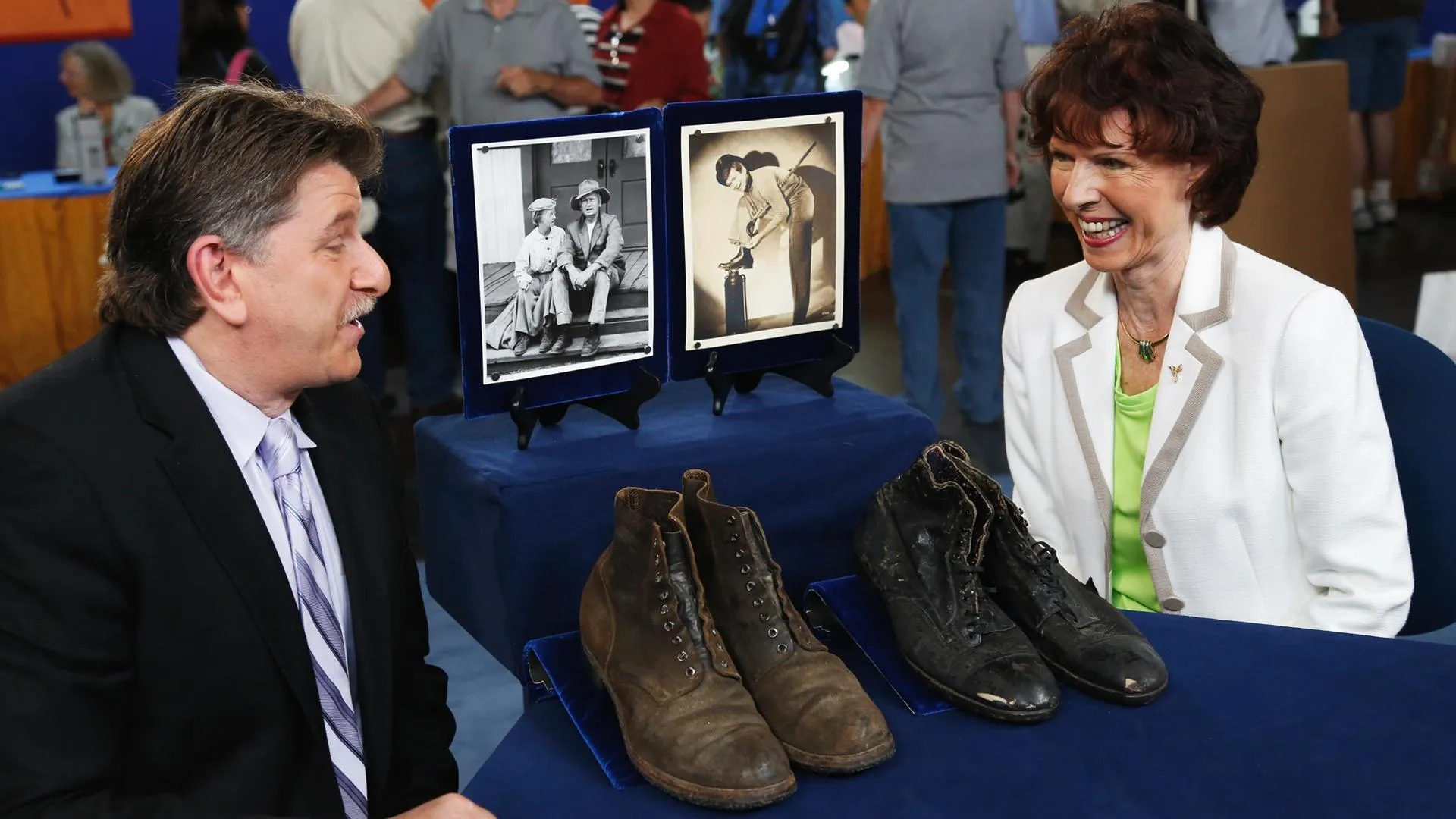GUEST: They're all creations of my grandfather. He would go into the forests of Duluth in Minnesota and he would find tree branches that had a particular look he was looking for, and he would create these figures based on the configuration that he cut out of the tree. He was kind of a political person, wanted to make a statement about America. He was from Sweden, emigrated in the '20s and settled in Duluth. He very much was a patriot. Central to the figures that he carved was Uncle Sam, and then at the time, during the war effort, Hirohito and Hitler were people he didn't care for, and he wanted to create them in a minimalist sense.
APPRAISER: To a certain extent, these are caricatures of those people who were very important in world affairs at the time. And it would seem to me by the way he's depicted some of these people, he's showing his disdain for them, at the very least. These folk figures are from a very important period in America's history: World War II. World War II folk art in itself I think we could call kind of a rare category. He was so skillful in carving, a little bit of sense of humor, and he used materials that he found readily at his disposal in Minnesota. For example, you told me that Uncle Sam's jacket is made of corn stalks.
GUEST: That's correct.
APPRAISER: And his vest is...?
GUEST: Birch bark.
APPRAISER: And Uncle Sam's legs are branches from some sapling. I don't think that he was formally trained as an artist.
GUEST: No, he was not.
APPRAISER: But he had the gift, there's no doubt about it. Who do you identify this fellow as?
GUEST: This I would have to say is a classic example of his sense of humor. It was a caricature of a classic 18th century pirate.
APPRAISER: Well, it's interesting you say that. I showed it to somebody and I told them in context, this was one of several figures. He said it's Mussolini.
GUEST: That makes sense. I've asked my family why he didn't do Mussolini. That's really interesting. I didn't even know that. The surfer, he's...
APPRAISER: He glided in from somewhere else entirely.
GUEST: Well, actually, of the four brothers that emigrated from Sweden into the United States in the '20s, one stopped in Duluth-- my grandfather-- the other three said nuts with the cold weather, kept going all the way to Hawaii. And so that's why the surfer.
APPRAISER: The person that you've identified as the surfer, this definitely works better as Stalin.
GUEST: Whoa.
APPRAISER: This completes the group, there's no doubt about it.
GUEST: Wow, that is just flat amazing. Now it makes total sense. It's always bothered us: why would he have a surfer in the middle of this statement he was making about these world figures?
APPRAISER: There's tremendous interest now in World War II-era material, and these fall under that very broad umbrella, and more specifically, under the folk art umbrella. I talked to a couple of people. Tough to pin down, but I would think the group of them would be worth in the area of $10,000 to $15,000 at auction.
GUEST: That's just overwhelming. That's just great.



